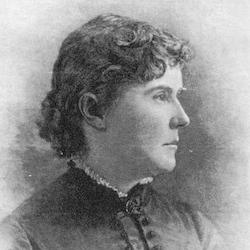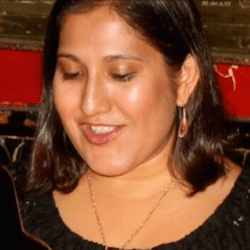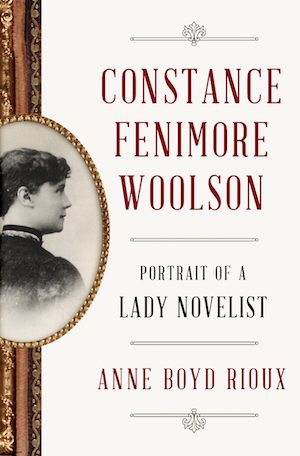
Claire Vaye Watkins’s essay “On Pandering,” about how much her writing has been influenced by a desire for the approval of the “white male lit establishment,” caused such a frenzy that it crashed Tin House’s website. Responses rapidly appeared at Salon, Jezebel, Flavorwire, Slate, and the LA Times, with more to come, surely. [Our response was sent in our newsletter, The Daily Rumpus. –Ed.]
Watkins’s essay does not speak for all women writers. As many have suggested on social media, she speaks particularly for white, middle- or upper-class, cis, heterosexual women, probably MFA graduates, who are writing “literary” as opposed to genre fiction. Yet the practice she describes—of “watching boys,” listening to them, and learning from them—is not a rare phenomenon.

The Guardian reported earlier this year that writers submitting manuscripts to an independent publisher listed among their influences only 22% female authors, even though 40% of the writers submitting were women themselves. The majority listed no women at all. Another study showed that the major prizes go primarily to books about male protagonists, many of them written by women.
Watkins’s first book, Battleborn, was successful, she claims, because she wrote it for white men. “She can write like a man, they said, by which they meant, she can write.” Now that she has become a mother, however, and has no more interest in writing to and for men, Watkins has “not written anything of consequence.” What she has produced feels “quaint. Domestic. For women.” In other words, no longer literary.
A powerful essay by Kavita Das, “Writers Shouldn’t Romanticize Rejection,” that ran in the Atlantic recently, did not receive nearly the attention of “On Pandering,” even though it tackles similar issues. Das examined how writers of color receive the message that their stories are not valued:
…publishers tell us that what we’re writing about is too narrow and niche and won’t appeal to mainstream audiences… And for many writers of color who face barriers in other parts of their life due to their identity, the rejection is compounded, forcing some to put down their pen and give up their voice.
To write outside of the mainstream, narrowly defined by many publishers as white, is to face the real possibility of silence.
Both essays should ignite serious conversations about how to, as Watkins says, “burn this motherfucking system to the ground and build something better.” Taken together, they provide a peek behind the pie charts documenting gender and race imbalances in reviewing and publishing. Numbers can tell only part of the story. The (often unconscious) internalization of a white male-dominated construct of literary value, whether by authors, editors, or publishers, is much harder to put one’s finger on, and it has a long history.

As someone who studies and teaches nineteenth-century women writers, I read both essays with fascination, sadness, and a powerful feeling of déjà vu. Much of what they describe are age-old problems. That they continue to be so prevalent is a symptom of patriarchal domination, which can cloak itself as marketing concerns or vague judgments about what qualifies as “literary.” But it is no less virulent in its power to silence.
The practice of looking to white male writers for models and validation has been for centuries the surest way for those on the margins to gain credibility. Women writers most ambitious for literary recognition have even published under male names. It worked wonderfully for George Eliot, George Sand, and Currer Bell, who are only the most well-known examples. Last year, Bryon Donovan tried it with not-so-surprising results, including that she began to take her own writing more seriously. Women adopt a male name to be judged as a writer, rather than as a woman writer.
On the other hand, there have always been plenty of women writers content to be classified by their gender. In the nineteenth century, they wrote what Nina Baym has called “woman’s fiction”—fiction written by, for, and primarily about white women. Such novels were the most popular of their day, drawing the ire of Nathaniel Hawthorne, who railed against “the damned mob of scribbling women.” His virulent views may have gone underground (although casual dismissals are still commonplace, as Watkins demonstrates), but the gender segregation of the literary world is alive and well. Today we call most novels written by women about women’s experiences “women’s fiction,” a practice of relegating the writings of women to an inferior category. Some say this must stop, while others say they proudly write for women, including Jennifer Weiner, who continues to complain that critics don’t take such work seriously.
But the strongest déjà vu I felt reading while reading Watkins’s essay came from my research on the writer Constance Fenimore Woolson (1840–1894), one of the most highly regarded American writers of the nineteenth century, who is today virtually unknown. Like Claire Vaye Watkins, Woolson sought serious literary recognition through male validation, looking to men for models, mentors, and support. She wanted nothing more than to be viewed as a “writer” and not a “woman writer,” which required her to reject everything associated with women’s writing. She once wrote, “I have such a horror of ‘pretty,’ ‘sweet’ writing that I should almost prefer a style that was ugly and bitter, provided it was also strong.” Like Watkins, she eschewed the sentimental and the domestic and wrote many of her stories from a male point of view. Yet she learned early in her career, as Watkins did, that such “pandering” could win her approbation but not the same respect that male writers received. Even the most supportive members of the male literary elite were unable to see past her gender.
This became painfully clear to Woolson when she moved to Europe in 1880 and became a close friend of Henry James. As an expat, he was unfamiliar with her meteoric literary rise, which resembled Watkins’s in many respects. James treated her as a “lady” rather than a peer. Many years later, however, James would call Woolson his “confrére” and write an appreciative essay on her work.  Although Woolson painfully pandered to James in a handful of early letters (the only that survive from their fourteen-year friendship), in her fiction she challenged his version of realism. This is where Woolson’s story diverges from Watkins’s and could prove instructive for women writers seeking a way through the impasse she describes. Woolson criticized James’s lack of feeling for Isabel Archer in The Portrait of a Lady and proceeded in her next novel, East Angels, to create a fuller portrait of life by revealing her characters’ deepest emotions. The novel is a masterful rendering of the slow revelation of a woman’s desire and pain, which she keeps hidden from a world that conspires in her silence.
Although Woolson painfully pandered to James in a handful of early letters (the only that survive from their fourteen-year friendship), in her fiction she challenged his version of realism. This is where Woolson’s story diverges from Watkins’s and could prove instructive for women writers seeking a way through the impasse she describes. Woolson criticized James’s lack of feeling for Isabel Archer in The Portrait of a Lady and proceeded in her next novel, East Angels, to create a fuller portrait of life by revealing her characters’ deepest emotions. The novel is a masterful rendering of the slow revelation of a woman’s desire and pain, which she keeps hidden from a world that conspires in her silence.
By writing not as a man or as a woman but from the fertile ground in between, and by writing convincing male characters while challenging (male) critics’ limited perceptions of female characters, Woolson attempted to locate herself as an “artist” beyond gender. Thus she wrote not only for the male literary elite but against it, creating some of the most powerful literature by a woman in the nineteenth century.
Woolson is rarely read today. Her literary star faded quickly after her death, and her work fell through the cracks of the dominant narrative of America’s literary history, which has been strictly segregated by gender into camps of male realists or naturalists and female regionalists or sentimentalists.
Erasing women writers like Woolson carries immense implications. It creates an environment ripe for the continued marginalization and silencing of women’s voices today. I have written elsewhere about the importance of ensuring that high school and college classrooms range well beyond the white male canon that still predominates in most of them. I will simply reiterate here, in light of Watkins’s own admission that she read “some, but not enough” women and did not watch them as she was trained to watch men, that one of the most important ways to burn down the system is to participate in the recovery of forgotten and neglected writers, and to recognize their struggles as keys to understanding and overcoming our own.




